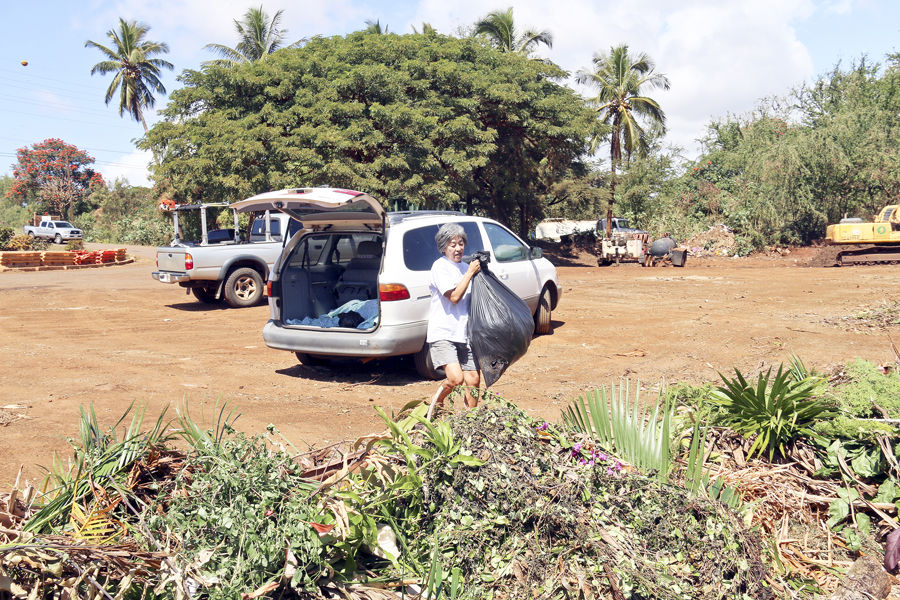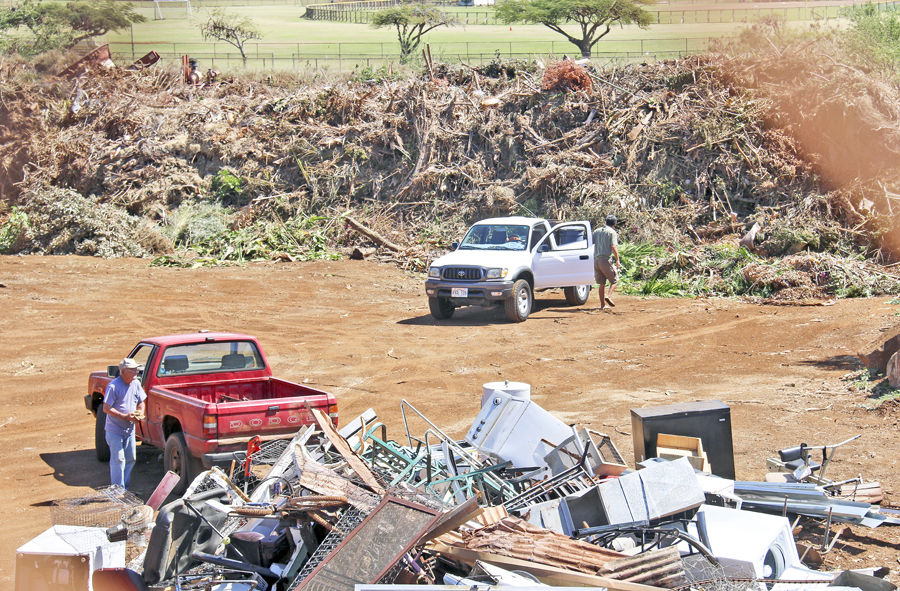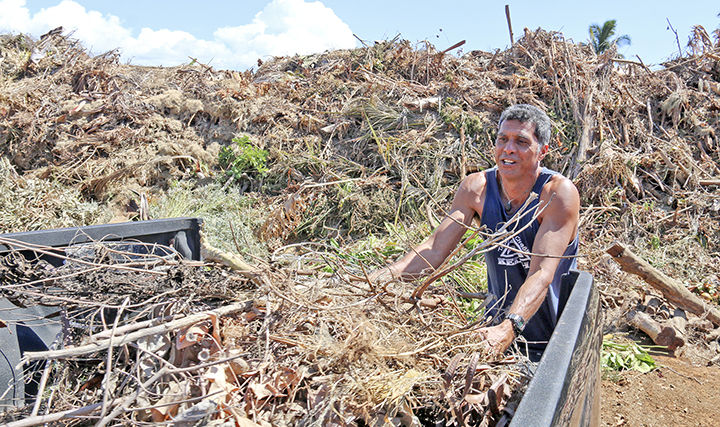HANAPEPE — “Going green” could be translated as “green going” for the County of Kauai’s Solid Waste Division.
For a little more than two decades, efforts have been made to divert not just discarded items but especially green waste from the Kekaha Landfill.
Green waste — lawn trimmings, yard waste, tree trimmings and shrubbery — is “by far, the largest amount of material diverted from landfill,” said Solid Waste Program Coordinator Allison Fraley.
During the 2014 fiscal year alone, a little more than 21,627 tons of green waste were dropped off at the county’s five refuse transfer stations. Composting facilities collected another 3,890 tons.
“This does not account for green waste diverted at job sites and through backyard and farm composting efforts, which would bring the total green waste diversion even higher,” Fraley said. “Commercially generated green waste is restricted at the landfill, along with cardboard and metal.”
The county’s green waste recycling program dates back to 1993. Residents can reap the benefits of their contributions by picking up free mulch made from green waste and produced by county contractors.
Waimea resident Steven Palama said he usually makes it a point to drop off his lawn clippings once a week. He occasionally picks up some compost and green dirt.
“This is definitely a good thing,” Palama said Friday after dropping off some green waste at the Hanapepe Transfer Station. “Better here than in the landfill.”
Kekaha resident Kawai Warren usually drops off his green waste once a week at either the Kekaha Landfill or the Hanapepe Transfer Station, and picks up some dirt and compost to use at home.
“Normally, I compost my own and share with the Kekaha Community Garden (at St. Paul’s Church), but this one has seeds and you can’t compost them,” Warren said Friday at the Hanapepe Transfer Station.
Though specific numbers on how much green waste was picked up at individual transfer stations last year was not immediately known, all green waste collected on the North Shore is processed at Heart and Sole Organics in Moloaa, Fraley said. Green waste collected at the Lihue transfer station is processed at Kauai Nursery in Puhi. All Westside materials are processed by Shredco in Kekaha.
Some mulch, or shredded green waste, is normally available for residents to pick up at these diversion sites. The Hanapepe Refuse Transfer Center is the only county-operated facility where residents can pick up mulch.
The remaining green waste that is not given away to residents, Fraley said, is used by county contractors “to be processed and used by them as mulch or as the base for a finished compost product.”
“Mulch is a rough product that is used as weed abatement media or ground cover and does not need time to cure,” Fraley explained. “Mulch can be utilized as soon as it is ground.”
In all, about $1.35 million, amounting to just over $62 per ton, was spent on the county’s green waste diversion program last year — about half of the $119 per ton cost to send waste directly to the Kekaha Landfill.
But county officials say they’re not done just yet.
Solid Waste Division officials are planning to “add residential curbside green waste collection when curbside recycling is provided,” Fraley said.
When this happens, residential customers would receive three curbside bins.
“This improvement is about three to four years off, requires the capital investment to build a MRF (materials recovery facility) to sort recyclables, and would require an additional collection route for every-other-week green waste and recycling pickup from residents,” Fraley said.
“The details of these plans are pending, and overall program costs are dependent on solicitations for processing services.”







